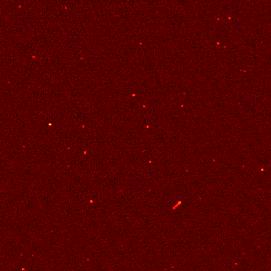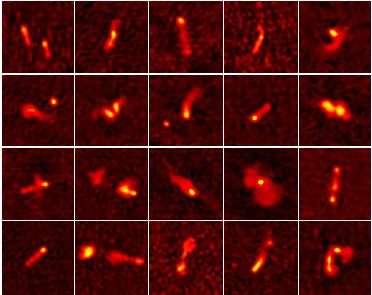|
October 20, 2004
Contact:
Dave Finley, Public Information Officer
Socorro, NM
(505) 835-7302
dfinley@nrao.edu
Sky Survey Provides New Radio View of Universe: Graphics
Click on Each Image for Full-Sized Version

This false color image shows a small portion of the radio sky as seen
by the VLA in the VLSS. White regions indicate radio-bright emitting
galaxies, while deep red/black indicate regions of little or no radio
emission. All of the "spots" in the image are radio-bright galaxies.
The extended object in the lower right is a nearby radio galaxy. Its
elongated shape results from jets of highly relativistic (moving at
nearly the speed of light) material being shot in opposing directions
from the environment of a
supermassive black hole located near the center of the source. (The
supermassive black hole and its environment are not visible in this
image.) The typical radio-bright galaxy in this image is only about
half-way across the observable Universe, but astronomers are trying to
determine if there might be an extremely distant one among the more
typical ones.
|

A "rogues' gallery" of radio galaxy types seen in the VLSS. White
regions indicate radio-bright emitting regions in the galaxies, while
deep red/black indicate regions of little or no radio emission. In
all cases, the radio galaxies are thought to shine because of jets of
highly relativistic material being shot from the environment of a
supermassive black hole in the center of the radio galaxy. The
diversity of shapes probably reflects the environment of the radio
galaxy itself as well as the history of the supermassive black hole
and how much material has fallen into it.
|
CREDIT: NRAO/AUI/NSF
The
National Radio Astronomy Observatory is a facility of the
National Science Foundation, operated
under cooperative agreement by
Associated Universities, Inc.
Modified on
Wednesday, 20-Oct-2004 11:11:44 EDT
|


